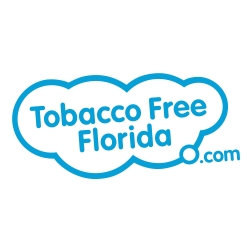It's a New Day in Public Health.
The Florida Department of Health works to protect, promote, and improve the health of all people in Florida through integrated state, county, and community efforts.
Your Health and Your Home
June 12, 2013

If you're like most Floridians, you probably feel the safest when you're in your own home. However, danger may be lurking without your knowledge. June is Home Safety Month and Tobacco Free Florida is zeroing in on the importance of maintaining a smoke-free home and encouraging smoke-free policies in multi-unit buildings.
The fact is there is no risk-free level of exposure to secondhand smoke. Breathing even small amounts of tobacco smoke can be dangerous.
[i] That's why it's imperative to ensure your home is completely smoke-free at all times. This personal policy is the only way to protect yourself and your family from a deadly mix of more than 7,000 chemicals, hundreds of which are toxic and 69 that can cause cancer, in secondhand smoke. [ii]
Why Should Residential Buildings Go Smoke-Free?
It's much easier to maintain control over a single-family home than it is to do so within an apartment building or condominium. One of your neighbors could choose to smoke in their unit several floors above you or on the other side of the building, for that matter, and put you at risk. Tobacco smoke can move along air ducts, through cracks in the walls and floors, through elevator shafts, along plumbing and electrical lines to affect all units. [iii],[iv] Creating separate non-smoking areas, cleaning the air, and using ventilation techniques don't eliminate exposure.
This exposure can pose a huge threat to your health, whether you're young or old. Inhaling secondhand smoke could be enough to block arteries and trigger a heart attack in someone whose arteries are silently clogged because tobacco smoke immediately seeps into the bloodstream and changes its chemistry so that it becomes stickier, allowing clots to form that can cause major blockages in already narrowed arteries.[v] For children, exposure to secondhand smoke increases their risk of lung problems, ear infections, and severe asthma, and even doubles an infant's risk of Sudden Infant Death Syndrome (SIDS).[vi]
Another concern is the risk of fire caused by smoking indoors. Smoking-related fires are the leading cause of fire deaths.[vii] Sadly, about one-third of the victims are children.[viii] These deaths and the destruction caused by these fires can easily be prevented by prohibiting smoking.
Can My Building Really Go Smoke-Free?
Smoke-free policies do not impede upon a person's rights because there is no constitutional right to smoke.[ix] Conversely, if you have a medical condition made worse by secondhand smoke, you may be protected under federal and state disability laws. Depending on the nature of your disability, your landlord may be required to take action to eliminate the source of the problem.[x]
Additionally, the less people see friends, family and neighbors smoking where they live, the less normal the act will become in the eyes of the most impressionable residents—children. This is called de-normalization and it's an effective way to prevent youth from smoking and to promote behavior change amongst those who are trying to quit.
You can learn more about smoke-free housing at www.tobaccofreeflorida.com/current-issues/smoke-free-housing-the-issue/.
About Tobacco Free Florida
DOH's Tobacco Free Florida campaign is a statewide cessation and prevention campaign funded by Florida's tobacco settlement fund.
Tobacco users interested in quitting are encouraged to use one of the state's three ways to quit. To learn about Tobacco Free Florida and the state's free quit resources, visit Tobacco Free Florida or follow the campaign on Facebook at www.facebook.com/TobaccoFreeFlorida or Twitter at @tobaccofreefla.
DOH works to protect, promote and improve the health of all people in Florida through integrated state, county and community efforts.
[i] U.S. Department of Health and Human Services. The Health Consequences of Involuntary Exposure to Tobacco Smoke: A Report of the Surgeon General. Atlanta: U.S. Department of Health and Human Services, Centers for Disease Control and Prevention, Coordinating Center for Health Promotion, National Center for Chronic Disease Prevention and Health Promotion, Office on Smoking and Health, 2006
[ii] U.S. Department of Health and Human Services. How Tobacco Smoke Causes Disease: The Biology and Behavioral Basis for Smoking-Attributable Disease: A Report of the Surgeon General. Atlanta, GA: U.S. Department of Health and Human Services, Centers for Disease Control and Prevention, National Center for Chronic Disease Prevention and Health Promotion, Office on Smoking and Health, 2010.
[iii] Office of the Surgeon General. The Surgeon General's call to action to promote healthy homes. Washington, DC: Department of Health and Human Services, 2009.
[iv] Public Health Service, Office of the Surgeon General. Children and secondhand smoke exposure: excerpts from The Health Consequences of Involuntary Exposure to Tobacco Smoke: a report of the Surgeon General. 2007.
[v] U.S. Department of Health and Human Services. A Report of the Surgeon General: How Tobacco Smoke Causes Disease: What It Means to You. Atlanta: U.S. Department of Health and Human Services, Centers for Disease Control and Prevention, National Center for Chronic Disease Prevention and Health Promotion, Office on Smoking and Health, 2010
[vi] Anderson, H.R. and D.G. Cook. 1997. Health Effects of Passive Smoking-2: Passive Smoking and Sudden Infant
[vii] 2010 report by the U.S. Fire Administration (USFA)
[viii] Facts About Smoking and Home Fires (2007). U.S. Fire Administration Publication—306, June, 2007. Available at: http://www.usfa.dhs.gov/downloads/pdf/smoking/GeneralAudienceFactSheet.pdf
[ix] Graff, Samantha K. There is No Constitutional Right to Smoke: 2008. (March 2008) A Law Synopsis by the Tobacco Control Legal Consortium. http://www.publichealthlawcenter.org/sites/default/files/resources/tclc-syn-constitution-2008_0.pdf
[x] Public Health Law & Policy: Technical Assistance Legal Center, How Disability Laws Can Help Tenants Suffering from Drifting Tobacco Smoke.”, June 2008, http://www.talc.phlpnet.org/tobacco-control/products/disabilitylawsdriftingsmoke




Connect with DOH